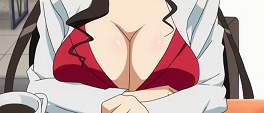
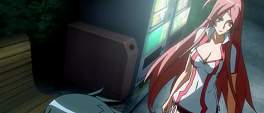
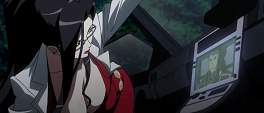

Dragonaut's first episode is full of breasts. The second episode is full of dragons. The third episode has breasts and dragons. This is of course entirely unsurprising given the character designer's previous works: Love Hina, Gravion and recently Witchblade; the seminal Stellvia of the Universe seemingly an exception to Makoto Uno's otherwise top-heavy résumé. Abnormally buoyant female appendages aside, Dragonaut's opening episodes are filled with confusing events, terrible CG wyrms and a slow-but-steady introduction to the cold-clinical world the series inhabits.
supposed secret labs and bustling command centres are rendered with a yawn rather than any flair
"Competent" is the best way to describe the series. It bears all the hallmarks of a two season show that isn't prepared to tip its hand at the outset. The hook centres on a trio of creatures that came to earth from outer-space, destroying the protagonist's spacecraft and family along the way. Modi operandi set, time jumps several years into the future when Earth is threatened, people actualise/synchronise/ride mechanical dragons and the once young protagonist now has a barrel full of angst to carry around. Terminology such as "Album", "Dragonaut", "D-Project" and "ISDA" are scattered liberally throughout the dialogue to inject a kind of faux mysticism to the proceedings but fundamentally, nothing is meritorious.
Read the rest of this entry

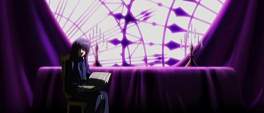
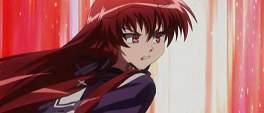
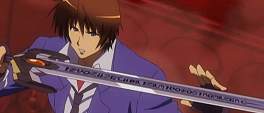
The first thing one notices about Night Wizard is the gradated hair. The second is that it isn't as laughably comical as its name would suggest it to be. Pitching itself as a fantasy romp with school children, the series' first three episodes focus more on slice of life than slicing of life. It has a kind of wide-eyed innocence and refreshing lack of sexuality which makes it an easy and unintrusive show that is sporadically enjoyable and permanently predictable.
animation is serviceable and never flashy while voice acting is fitting and never memorable
Starting each episode with a blood-red tinged fight scene, it is immediately obvious that neither monster design or fight choreography are strong points; even the character designs feel pre-owned, so it is with some trepidation the series presses on. Beginning with a well trodden prologue of transfer student Ellis Shiho discovering she is in possession of not only an ancient and powerful artefact, but also of magic that may help save the world from a currently ongoing hidden war; it is like slipping into a pair of comfortable trousers. The series does little to deviate from this paradigm, its saving grace is the pace it moves at and the energy each character conveys. The terminal do-gooder attitude of Ellis quickly wears thin but is offset by the unexpected frankness of the shrine-maiden, Kureha Akabane, the clumsy sword-wielder Renji Hiiragi and the devious matriarch Anzelotte. They are novel switch-ups of the usual archetypes but the introduction of the token introvert, Akari Himuro (who totes a Bullet Witch style broom), indicates that this is all that is innovative about the series.
Read the rest of this entry
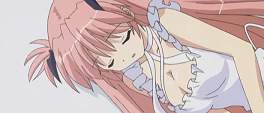
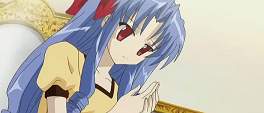
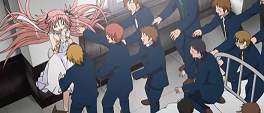

Calling Goshuushou-sama Ninomiya-kun stunningly unimaginative would be a gross understatement. In three episodes the series has done nothing to endear itself; the only bait it has for its meagre hook is the fan-service which given the ropey art-style is perhaps not bait at all. Three episodes is enough to see exactly where this series is heading: it more or less started at rock bottom and each episode just gives it a new shovel to keep digging.
she constantly attracts members of the opposite gender and elicits buried homosexual tendencies of the same gender
It's fair to say that series like Goshuushou-sama Ninomiya-kun are a dime a dozen, from Green Green to Amaenaideyo, mediocre fan-service is usually not a valid enough premise to warrant sitting through a series, be it 13 or 24 episodes or longer. Series such as Girls Bravo or Ikkitousen more or less perfected the rampant exposure of the female form, the former relying on increasingly racy content while the latter delving into classical Chinese literature; GSNK has neither the energy or the creativity to maintain interest beyond an initial viewing.
Read the rest of this entry




Lifting off directly after the first season of Genshiken, the OVAs unfortunately have to the play the middle-child by introducing two new characters and settling them into the storyline in evident preparation for the second season. Handed over to the Kujibiki Unbalance studio Ajia-do, the OVAs suffer from sometimes atrocious animation but thankfully keep the charm and humour that made the first season so good.
Note: The aspect ratio for the screengrabs is incorrect, this is due to a combination of the way I capture screengrabs and the source I took them from; I have corrected this in the thumbnails and a pixel aspect ratio aware program (such as Adobe Photoshop) will display the screengrabs in their canonical ratio of 16:9.
the voyeuristic novelty of peering into an oft experienced group dynamic
The core characters remain unchanged however the focus has shifted away from the ambiable Sasahara and the entire three episode run is dedicated almost entirely to Kasukabe, Madarame and Ogiue. This is not as detrimental as it sounds and by concentrating on these characters the OVAs serve as a peninsula to the main series' continent, never feeling overwhelmed by the wealth of personalities available and not retreading old ground. It would be absurd to the view the OVAs as anything more than an extension of the first series and the soap opera appeal remains as does the down-to-earth comedy.
Read the rest of this entry



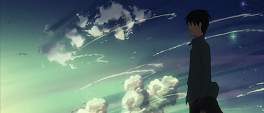
Words seem almost inadequate when trying to convey the wistful nostalgia evoked by 5 centimeters per second. Every scene in the petite one hour movie is visually arresting, the sparse dialogue secondary to the unspoken emotion loaded into each moment; it is beautiful, moving and amazingly personal film. Separated into three chronologically sequential stories, the film follows Takaki Tohno and his relationship with childhood friend Akari Shinohara.
each sky, each train car, each snow swept vista is beauteous and beyond the capabilities of real life to produce
The first story, Oukashou, comprises Takaki's fraught train journey to see Akari after they were separated due to parental employment. Occupying the bulk of the movie's timeline, the subtext of distance and solitude will be instantly familiar to anyone who has seen Makoto Shinkai's previous works: Voice of a Distant Start (Hoshi no Koe) and The Place Promised in our Early Days (Kumo no Mukou, Yakusoku no Basho). Even in such a short time-frame, Takaki's journey is sentimental and emotive, cutting straight to his fears and expectations unconcerned with exterior bravado. Scene by scene, poise and grace is established by valuing silence as much as dialogue and the ever present melody of the piano. The first story culminates in a serene landscape of snow and darkness before Takaki heads home in the fresh morning sunlight, starting the narrative cycle once more with the second and then third stories.
Read the rest of this entry



















